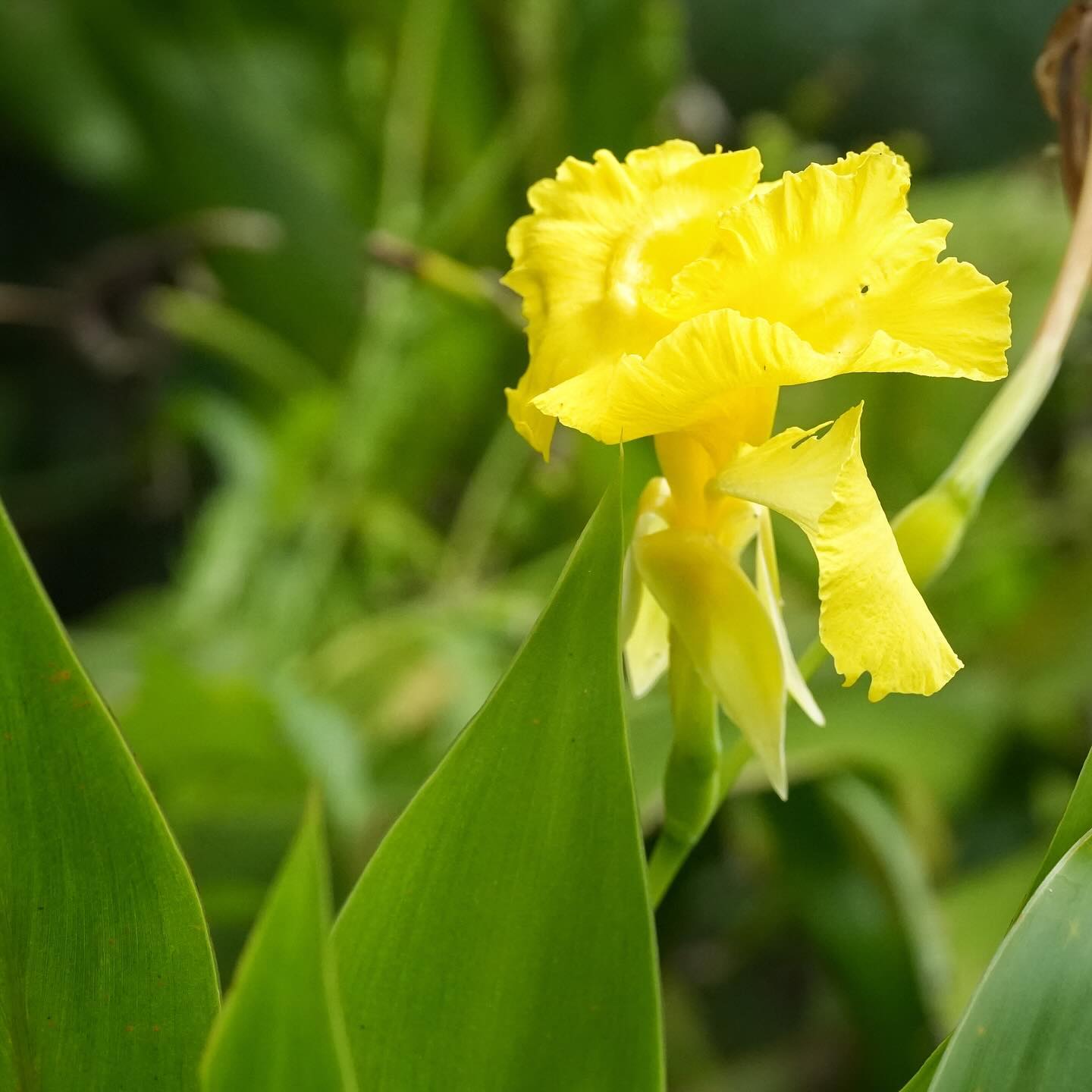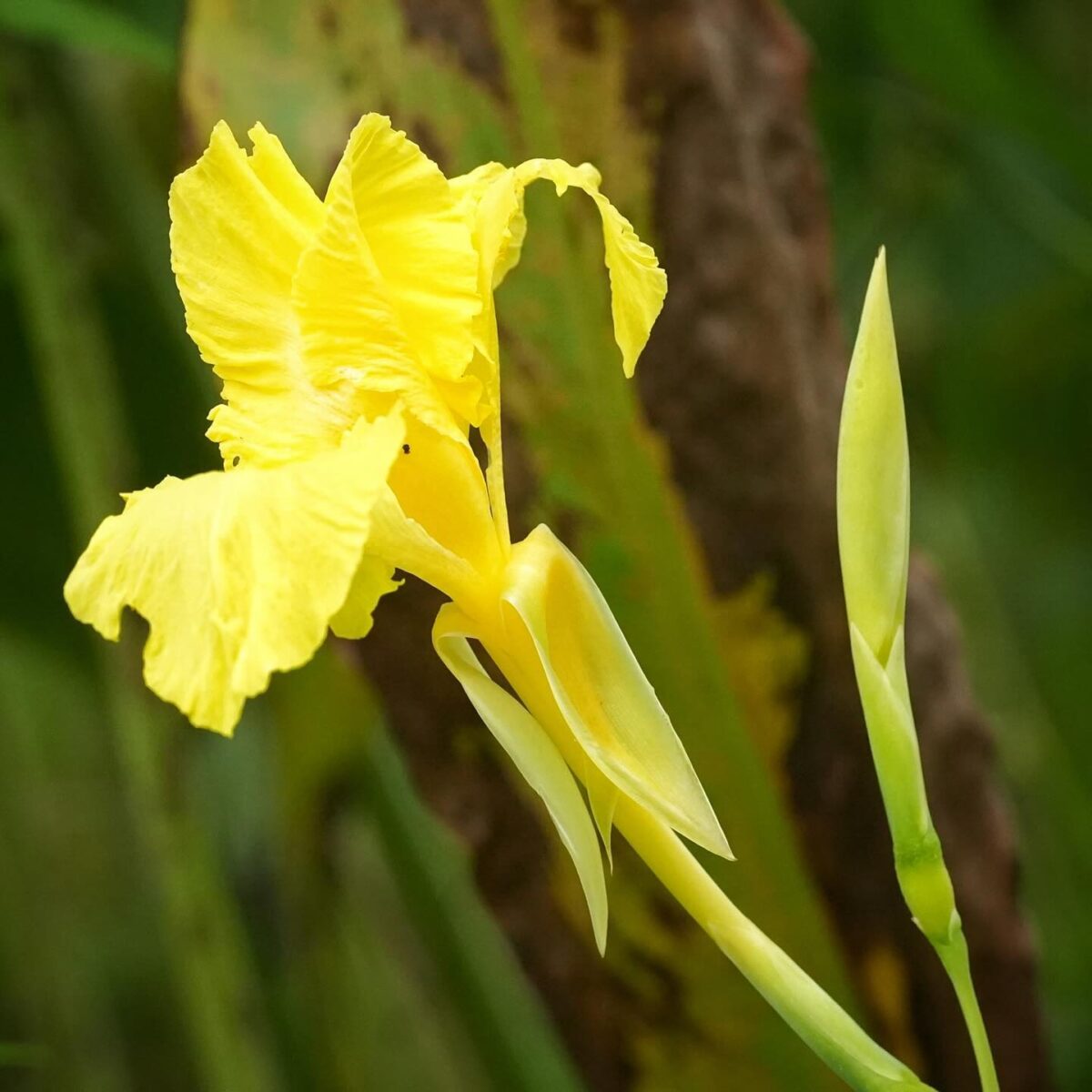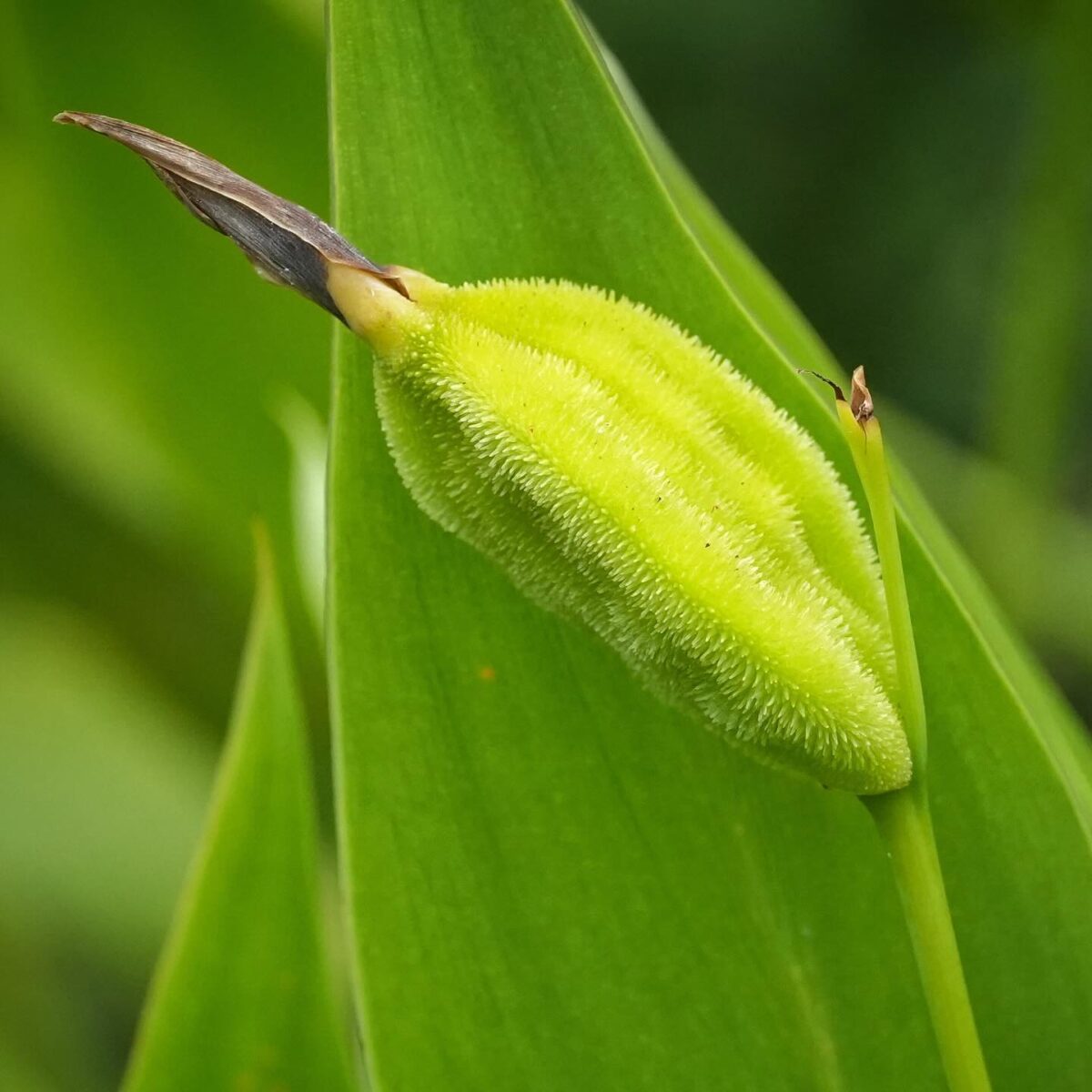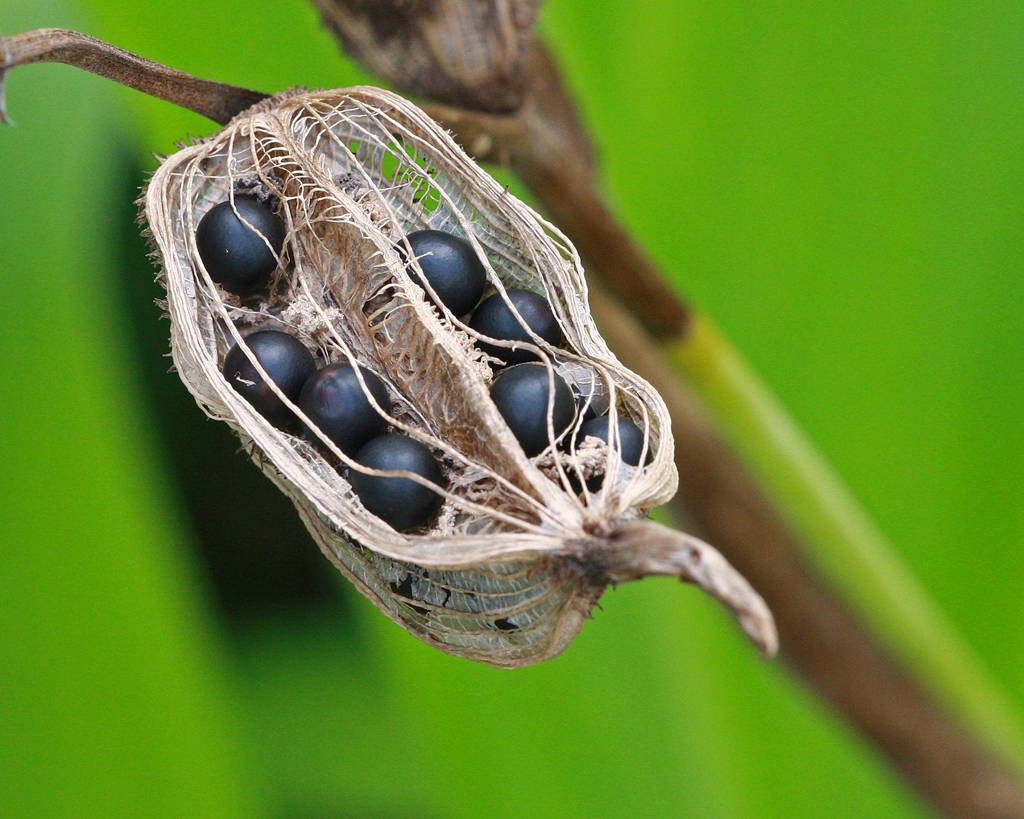Bandanna-of-the-Everglades
Pictured above: Bandanna-of-the-Everglades (Canna flaccida) by Emily Bell. Click on terms for botanical definitions. View post as a PDF.
Also known as Golden canna or Yellow canna, Bandanna-of-the-Everglades (Canna flaccida) is a robust aquatic wildflower with large, showy orchid-like blooms. It occurs naturally in freshwater marshes and swamps, and along pond and lake margins throughout much of Florida. It is the larval host for the Brazilian (or Canna) skipper, which will roll the leaf into a tube around its body as a means of protection from predators and extreme sun exposure. Dragonfly larvae have also been known to hide in the leaves until they change into adults. Bees and butterflies are attracted to the flower’s nectar.
Bandanna-of-the-Everglades flowers are composed of three bright yellow petals and three greenish-yellow sepals that are fused at the base, forming a tube-like structure. Petal lips are broad and drooping. Each flower is subtended by a single bract. Flowers are born in terminal clusters. They are short-lived, opening in late evening and closing by midday. Leaves are long, smooth and broadly lanceolate with entire margins and pointed tips. They are alternately arranged and spiral around the smooth, fleshy stem. Fruits are long (2–3 inches) capsules with rough surfaces. They contain many small, black pellet-like seeds.
About 20 species of Canna are known from the Americas, but Canna flaccida is the only species that can grow in partially inundated conditions.
Family: Cannaceae (Canna family)
Native range: Peninsular Florida, few Panhandle counties
To see where natural populations of Bandanna-of-the-Everglades have been vouchered, visit florida.plantatlas.usf.edu.
Lifespan: Perennial
Soil: Moist to inundated sandy, loamy or clay soils
Exposure: Full sun to partial shade
Growth habit: 3–5’ tall
Propagation: Division, seed (must be scarified)
Florida regions of landscape suitability: North, Central, South
Garden tips: Bandanna-of-the-Everglades has a robust tuberous rhizome that helps the plant to survive tough conditions such as drought or freezing temperatures. The plant tends to spread quickly by suckering. It can be used in rain gardens; along pond and lake edges; in ditches, swales, and marshes; and for naturalistic or restoration wetlands.
Bandanna-of-the-Everglades is available from nurseries that specialize in Florida native plants. Visit www.PlantRealFlorida.org to find a nursery in your area. Seeds are also available through the Florida Wildflowers Growers Cooperative at www.FloridaWildflowers.com.
Learn more about Bandanna-of-the-Everglades from the Florida Native Plant Society and the Institute for Regional Conservation.




